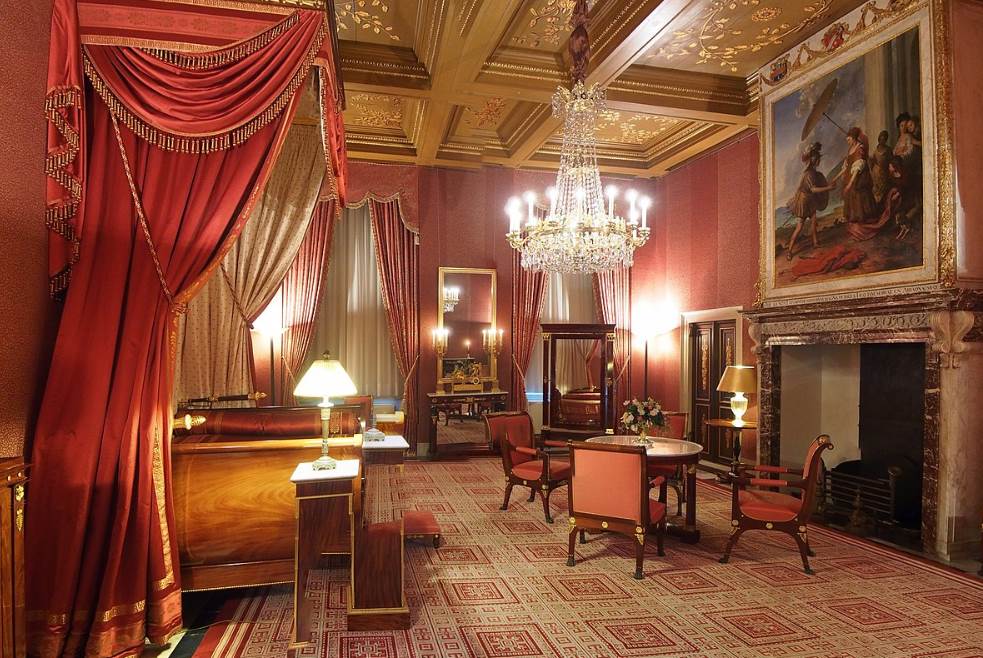One of the most opulent buildings in Amsterdam was constructed during one of the most fascinating periods in Dutch history.
This famous palace faces one of the best-known squares in the city and has a rich history that dates back to the 17th century.
In this article, you’ll discover some of the most interesting facts about the Royal Palace of Amsterdam, one of the city’s most stunning landmarks.
1. The palace is located in the historical heart of Amsterdam
The Royal Palace of Amsterdam is locally known as “Koninklijk Paleis van Amsterdam” or “Paleis op de Dam.” The second name is a reference to the location of the palace.
It faces the historic Dam Square, one of the most famous squares in the heart of the city. This section of the city is called the “Binnenstad” or “Inner City.”
Other famous landmarks near the palace are the War Memorial which was erected in 1956 and the “Nieuwe Kerk,” the Gothic Cathedral right next to it.
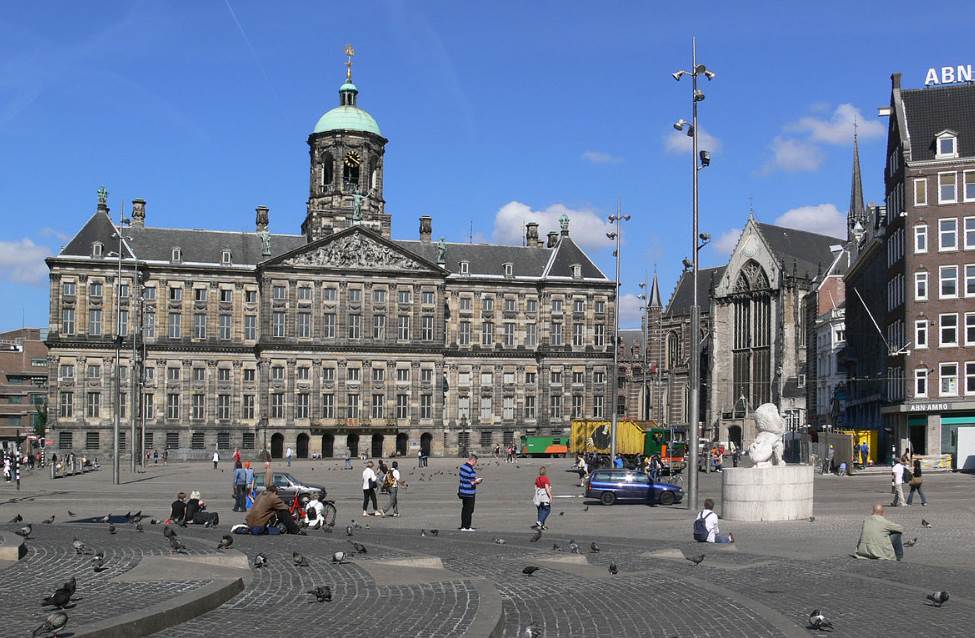
2. It was constructed for a different purpose in the 17th century
One of the most interesting facts about the Royal Palace of Amsterdam is that it wasn’t constructed to serve as a Royal Palace at all in the 17th century.
Amsterdam was becoming both the economical and political heart of the Dutch Republic during the Dutch Golden Age, a time also known as “The Dutch Miracle.”
This was a period in history in which the country was one of the most prosperous and advanced countries in the world.
The previous Town Hall was a Gothic building constructed during the Middle Ages and didn’t suffice anymore. The town hall turned palace was constructed between 1648 and 1655.
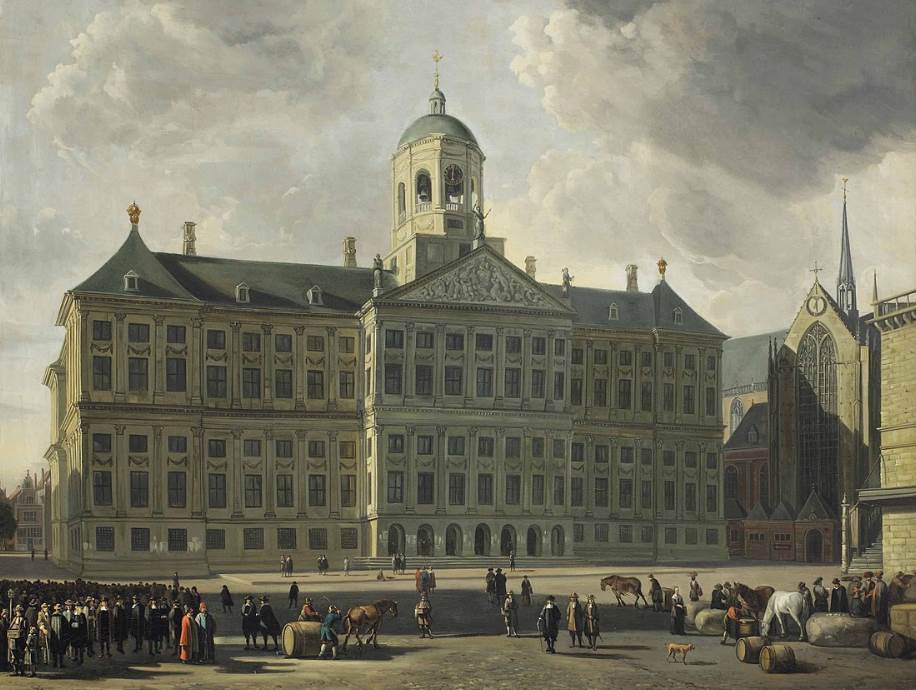
3. The building was transformed into a royal palace in the early 19th century
The Dutch Republic existed from 1588 until it was ended by the French victory in the Batavian Revolution of 1795.
This turbulent period in European history, initiated by the French Revolution in 1789, resulted in a transition of power. It also changed the purpose of what was still the Town Hall of Amsterdam back then.
The Batavian Republic that replaced the Dutch Republic was led by Louis Bonaparte (1778-1846), the brother of Napoleon Bonaparte (1769-1821).
He became the King of Holland in 1806 and transformed the town hall into a royal palace. He did so after moving his royal court from The Hague and Utrecht to Amsterdam.
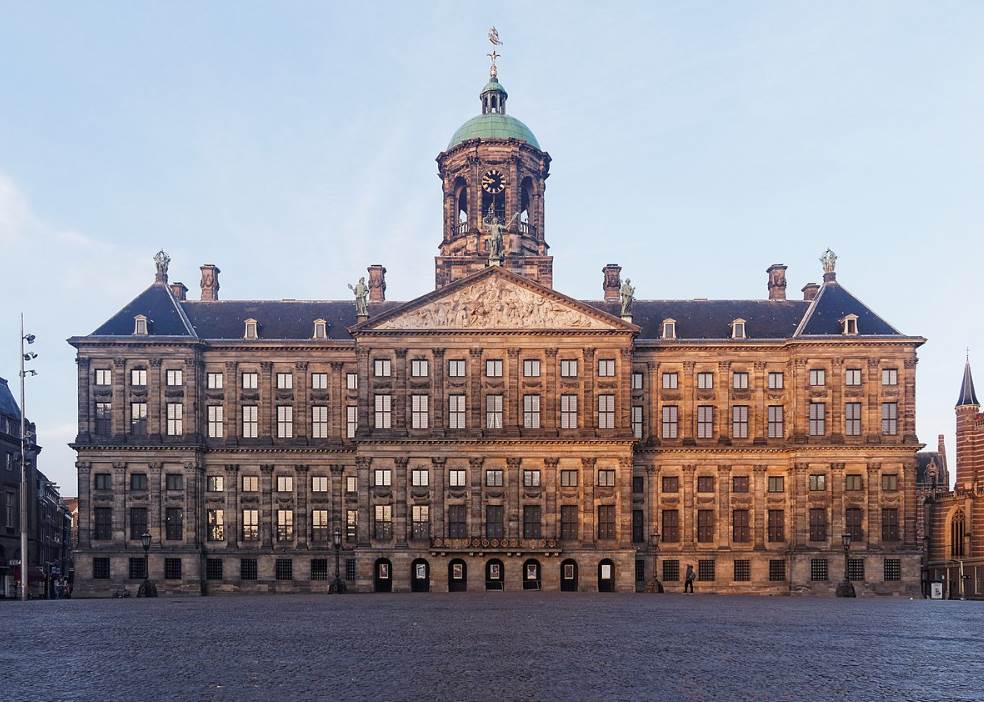
4. The building features a relatively simple Dutch Classicist design
King Louis I of Holland certainly must have thought that the Town Hall of Amsterdam had all the qualities to serve as his royal palace.
It’s considered to be the most amazing building constructed during the Dutch Golden Age and was designed in the typical Dutch Classicist style.
This is a type of Neoclassical architecture that didn’t feature all the bells and whistles of Baroque architecture but rather focused on the practical integration of all elements.
Thi style is sometimes referred to as Classicist Baroque because it flourished during a period that Baroque architecture was predominant in other parts of Europe (yes, the Dutch were ahead of their time during this period in history).
The architect of the building was Jacob van Campen (1596-1657), a leading architect during the Dutch Golden Age who also designed the Noordeinde Palace in The Hague.
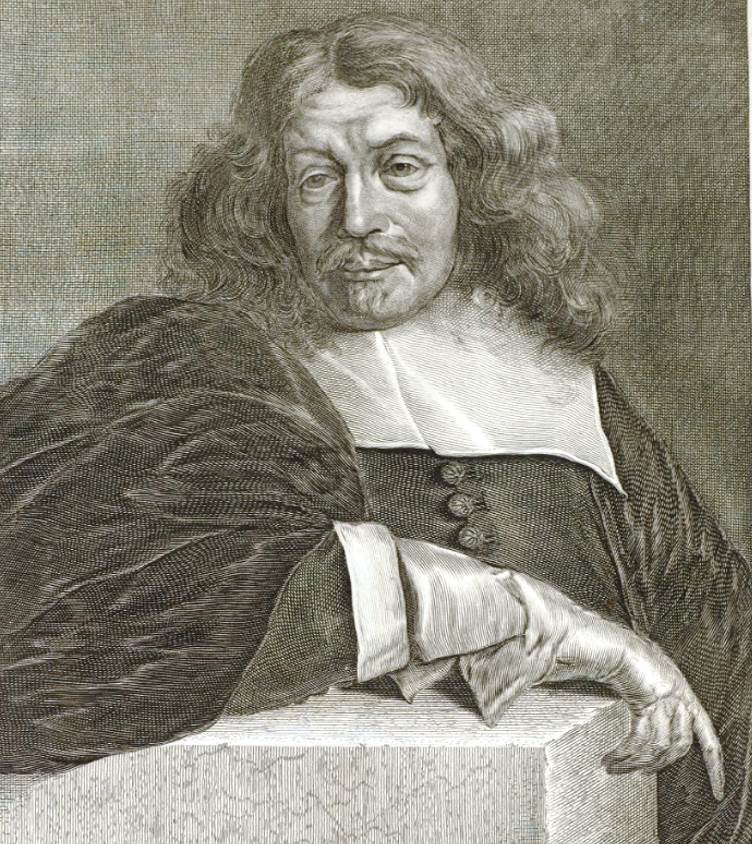
5. It’s one of 3 palaces that can be officially used by the Dutch Monarch
The Royal Palace of Amsterdam is one of the 3 royal palaces that are owned by the Dutch state but which can be used by the Dutch Royal family.
The other two are the Palace Noordeinde and the Huis ten Bosch Palace in The Hague.
The building in Amsterdam is mostly used for welcoming guests during state visits and for receptions such as the yearly New Year’s reception.
Another important function of the palace is to serve as the venue of royal award ceremonies. Some of these include the Erasmus Prize, the Silver Carnation, the Royal Awards for Painting, and the Prince Claus Award.
It’s fair to conclude that the setting is phenomenal. The interior building looks just as amazing as the exterior and is well worth a visit.
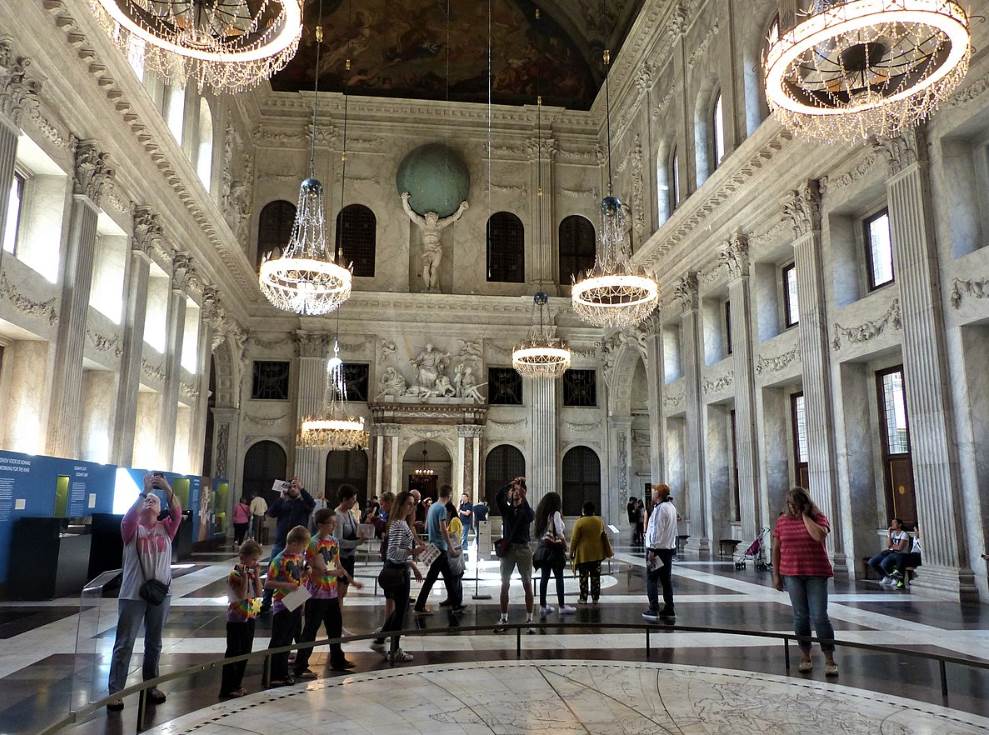
More interesting facts about the Royal Palace of Amsterdam
6. The Town Hall of Amsterdam was officially opened on July 29, 1655, by the Mayor of Amsterdam at the time, a man named Cornelis de Graeff.
7. The area near the building looked quite different back then because the building faced the landing wharves along Damrak. This was a canal in central Amsterdam that has been transformed into an avenue.

8. King Louis I of Holland transformed the town hall into a royal palace but he didn’t manage to enjoy it too much. He became the king in 1806 but abdicated shortly after on July 2, 1810.
9. Both the interior and the exterior of the building are decorated with a huge statue of Atlas who is carrying the globe on his shoulders. The exterior sculpture dates back to the 17th century.
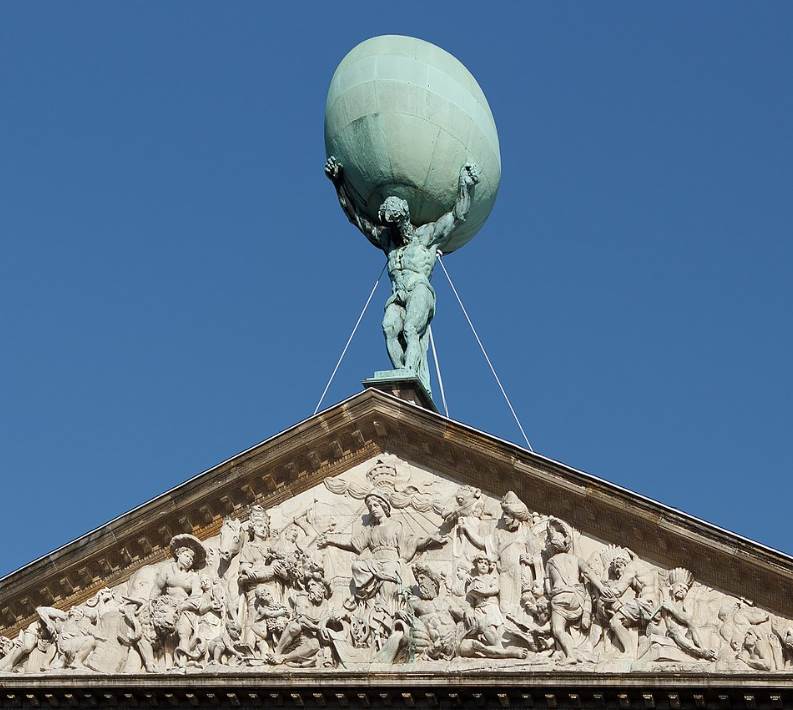
10. Not everybody appreciated the design of the building upon completion. The biggest criticism of the structure’s design was the lack of a monumental entrance which is quite remarkable for such a monumental structure.
11. An exchange building was located at Dam Square in the 19th century which was less than impressive as well. The palace was mockingly referred to as “The Building without Entrance” while the “Zocher Exchange” was referred to as “The Entrance without a Building.”
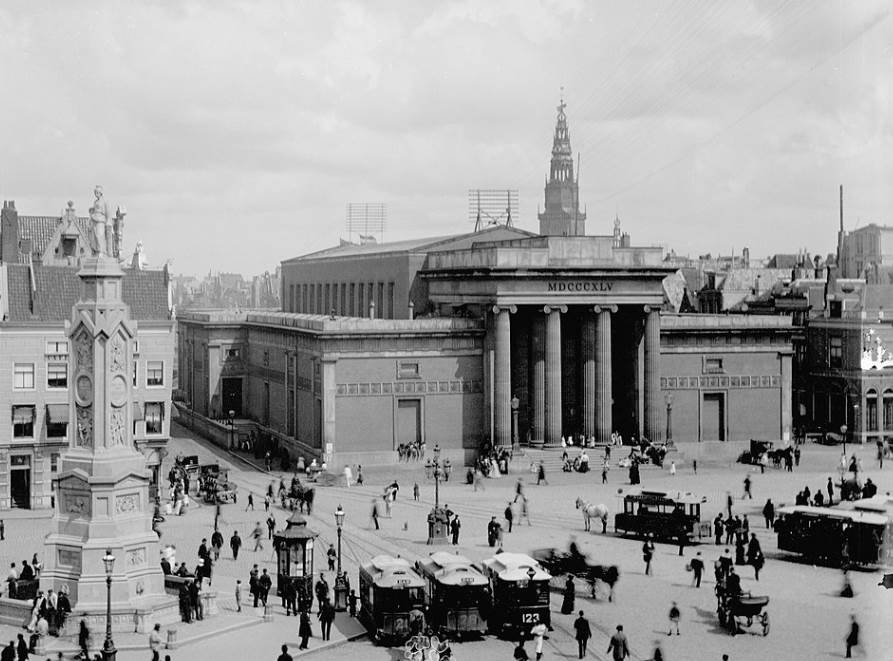
12. The building was constructed using sandstone which emulated a yellowish hue upon completion. Decades of pollution have seriously darkened the original color of the building.
13. A renovation project was conducted between 2005 and 2009 and all the asbestos inside the building was removed.
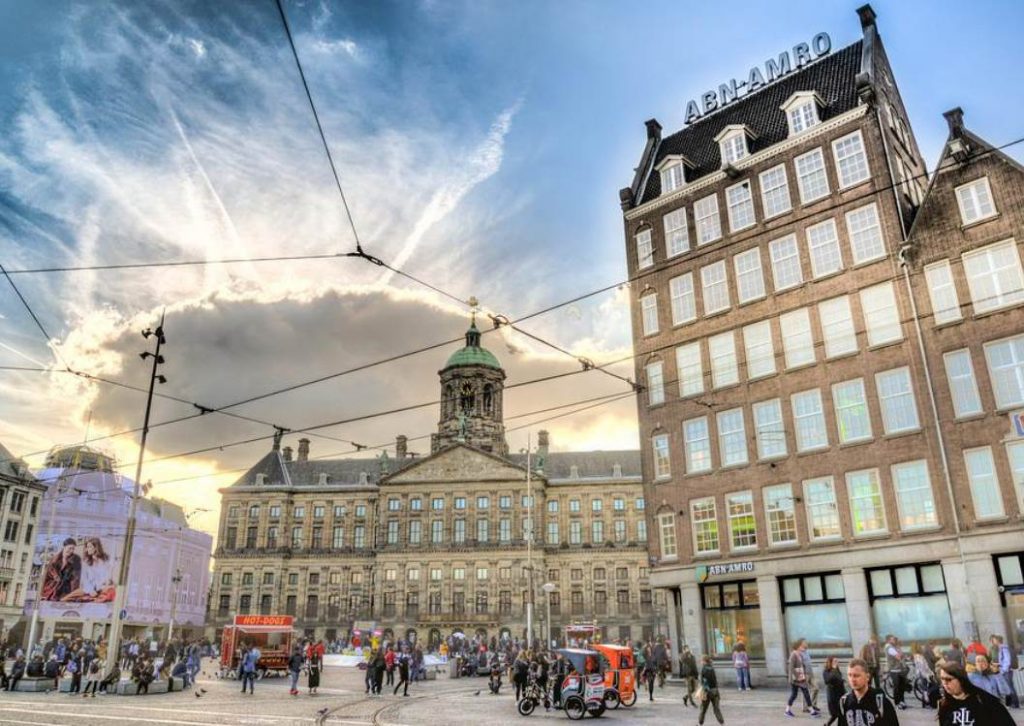
14. The building is much larger than it appears to be from Dam Square because it has a total floor area of 22,031 square meters (237,140 square feet).
15. The Royal Palace of Amsterdam is one of the city’s most popular tourist attractions. Guided tours are available which allow you to explore the imposing rooms and halls.
